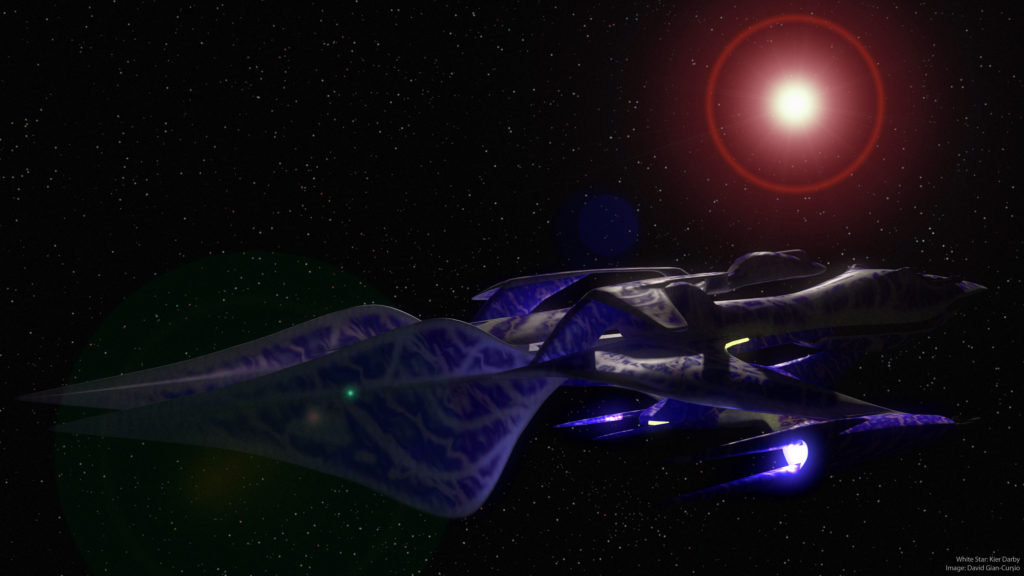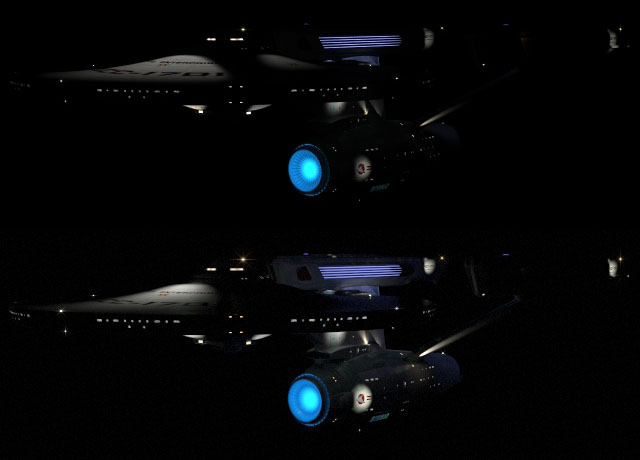At the urging of Rhys over at Foundation3D, yesterday I finally figured out how to adapt my workflow to use linear color.
There are many explanations on-line for what a linear workflow entails. It’s fairly technical, but the upshot is that computers have to mess with images to get them to look right. That’s great, except when you process those images, say by using them as texture maps in a 3D rendering calculation. All of the renderer’s math is thrown off, because it’s using source data that was filtered for display, and things come out looking wrong. Everything is wrong!
I heard the Good News of linear workflow years ago, but the “whys” and the “whats” were never followed up with a “how,” or if there was, it was in very general terms. Yesterday, I found my “how” in a post on the Lightwave forums explaining where the “make bad gamma-adjusted data into nice linear data” button was.
Now, it wasn’t quite that simple. All my old scenes were lit specifically to try and make them look right in the legacy workflow (unknowingly compensating for its flaws). Just flipping the switch means all the lights are… weird. Yesterday afternoon, I went through the lighting rig on Dennis Bailey’s Enterprise-Refit (since I’d already halfway-modernized it last year when I added the window-box interiors) and adjusted it to look better in the the linear workflow. I want to do some further tweaks to it, which is why the image at the top of this post isn’t of the Enterprise, but I’m getting ahead of myself.
You can see in this comparison that in the bottom image, light bounces and reflects more realistically (my interiors really benefit from this, coming out much brighter without any post-work). On the downside, the linear workflow does seem to make the renderer more sensitive to artifacts and graininess. The benefits far outweigh the drawbacks, though.
Since I wanted to do some more tweaks on the Enterprise before I took it out for a spin, so I instead loaded up Kier Darby’s White Star which has a much simpler lighting setup, and no physical model for me to worry about matching. I decided to take a whack at recreating the introductory shot of the White Star.


